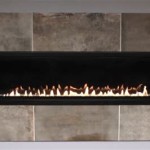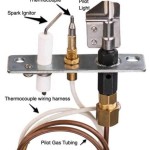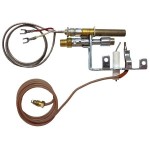How To Build A Stone Fireplace Ark
Constructing a stone fireplace ark is a significant undertaking requiring careful planning, adherence to building codes, and a sound understanding of masonry techniques. This article provides a detailed guide on the process, encompassing site preparation, foundation construction, masonry work, and safety considerations. This project requires a high level of skill and is best undertaken by experienced individuals or with the guidance of a qualified professional. Incorrect construction can result in structural instability, fire hazards, and potential injuries.
Planning and Preparation
Prior to commencing any construction, a comprehensive plan is essential. This involves determining the desired size and style of the fireplace ark, obtaining necessary permits, and ensuring compliance with local building codes and regulations. The design should consider the existing structure of the building, including floor joists, wall studs, and roofing supports. A detailed blueprint or sketch outlining the dimensions, materials, and construction sequence is highly recommended.
The first step in the planning phase is to determine the location of the fireplace ark. This location should be carefully chosen considering the existing structure of the building. This may involve consulting with a structural engineer to ensure that the floor and walls can support the weight of the stone fireplace. Factors such as chimney placement, proximity to combustible materials, and aesthetic considerations should also be taken into account.
Once the location is chosen, a detailed design must be created. This design must include the size of the fireplace opening, the height and width of the ark, and the type of stone to be used. It is important to consider the overall style of the home when designing the fireplace ark. The design should also include details about the firebox, the smoke chamber, and the chimney flue.
Obtaining the necessary permits is crucial before commencing construction. Local building codes and regulations often dictate specific requirements for fireplace construction, including fire safety standards, structural stability, and chimney specifications. Failure to obtain the necessary permits can result in fines, delays, and even the requirement to dismantle the structure. The permit application process typically involves submitting detailed plans and specifications to the local building department for review and approval.
Material selection is a critical aspect of the planning phase. The type of stone selected will significantly impact the appearance and durability of the fireplace ark. Natural stones, such as fieldstone, limestone, and sandstone, are commonly used for their aesthetic appeal and inherent fire resistance. The mortar used to bind the stones should be specifically designed for masonry construction and should be compatible with the chosen stone type. Other materials required include firebricks for lining the firebox, flue liners for the chimney, and insulation materials to prevent heat transfer to surrounding combustible materials.
Tools and equipment necessary for the project include a masonry saw, a mortar mixer, a trowel, a level, a plumb bob, a measuring tape, safety glasses, gloves, and a dust mask. Depending on the size and complexity of the project, scaffolding may also be required to safely access higher areas of the construction. Proper safety equipment is essential for protecting the worker from potential hazards such as flying debris, dust inhalation, and falls.
Foundation and Firebox Construction
The foundation is the critical element supporting the weight of the stone fireplace ark. A solid and properly constructed foundation is essential to prevent settling, cracking, and potential structural failure. The foundation should extend below the frost line to prevent heaving caused by freezing and thawing cycles. The specific design of the foundation depends on the soil conditions and the weight of the fireplace ark.
Excavation of the foundation area should be performed according to the planned dimensions. The excavated area should be level and compacted to provide a stable base for the foundation. A layer of gravel can be added to improve drainage and prevent moisture from wicking up into the foundation. The depth of the excavation should be determined by the local frost line depth and the expected load-bearing capacity of the soil.
A concrete footing provides a stable base for the foundation walls. The footing should be poured according to the specified dimensions and reinforced with steel rebar to improve its strength and prevent cracking. The footing should be allowed to cure properly before the foundation walls are constructed. Curing typically involves keeping the concrete moist for several days to allow it to reach its maximum strength.
Foundation walls can be constructed using concrete blocks or poured concrete. Concrete blocks are often used for their ease of installation and relatively lower cost. Poured concrete provides a stronger and more durable foundation wall. The foundation walls should be properly reinforced with steel rebar and should extend above the grade level to prevent water from entering the structure.
Once the foundation is completed, the firebox can be constructed. Firebricks are used to line the firebox due to their ability to withstand high temperatures without cracking or degrading. The firebricks should be laid in a bed of refractory mortar, which is specifically designed for high-temperature applications. The firebox should be sized appropriately for the desired size of the fire and should include an air intake to provide combustion air.
The hearth is the non-combustible area extending outward from the firebox opening. The hearth protects the surrounding floor from sparks and embers that may escape from the firebox. The hearth can be constructed from brick, stone, or other non-combustible materials. The hearth should extend at least 16 inches in front of the firebox opening and 8 inches on each side.
Stone Veneer Application and Chimney Integration
With the foundation and firebox completed, the construction of the stone ark can commence. This involves carefully selecting and placing individual stones to create the desired aesthetic appearance. The stones should be dry-stacked initially to determine the best arrangement and ensure a balanced and visually appealing design.
The process of applying a stone veneer requires meticulous attention to detail. The stones can be natural or manufactured depending on budget and aesthetic preferences. The stones should be cleaned and prepped before applying them to the underlying structure. This may involve removing loose debris or dirt from the stones.
Mortar is used to bind the stones together and create a strong and durable structure. The mortar should be mixed according to the manufacturer's instructions and applied to the back of each stone before placing it in position. The mortar joints should be consistent in width and depth to create a uniform appearance. Excess mortar should be removed from the stone surfaces to prevent staining.
The stones should be laid in courses, with each course overlapping the course below to create a staggered pattern. This staggered pattern provides structural stability and prevents the formation of vertical cracks. The stones should be carefully positioned to ensure that they are level and plumb. A level and plumb bob can be used to check the alignment of the stones.
As the stone veneer is constructed, it is essential to integrate the chimney flue. The chimney flue is a vertical shaft that carries exhaust gases from the firebox to the outside atmosphere. The chimney flue should be lined with clay tiles or stainless steel liners to protect the surrounding masonry from the corrosive effects of the exhaust gases.
The chimney should extend at least three feet above the highest point of the roof to ensure proper draft. A chimney cap should be installed to prevent rain, snow, and debris from entering the chimney flue. The chimney cap also helps to prevent downdrafts, which can cause smoke to back up into the house. The chimney should be inspected regularly and cleaned as needed to prevent creosote buildup, which is a fire hazard.
Proper ventilation is crucial for efficient combustion and to prevent the buildup of harmful gases inside the home. A proper outside air kit can provide combustion air directly to the firebox, improving the efficiency of the fireplace. A carbon monoxide detector should be installed in the home to alert occupants to the presence of carbon monoxide, a colorless and odorless gas that can be deadly.

Ark Survival Evolved Patch 227 Stone Fireplace Wood Cage How To Make Them

Custom Fireplace And The Hillside S Ark Survival Evolved Olympus Ep 11

What Is Stone Fireplace Ark Ragnarok

Ark Survival Evolved How To Build The Ultimate Base

Ark How To Build A Cosy Dwarven House Tutorial

Ark News Official Community Forums Survival Evolved Bases Tips

Steam Community Screenshot Library Fireplace

How To Build A Fireplace With Chimney For Stone Castle In Valheim Base Building Design Guide

Is The Fireplace Worth It Ark Survival Evolved

Ark Survival Evolved Wooden Cages Stone Fireplace Patch 227 Fun With
Related Posts








